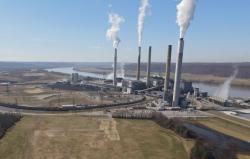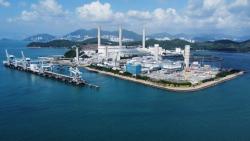
OR WAIT null SECS
© 2024 MJH Life Sciences™ and Turbomachinery Magazine. All rights reserved.
How gas turbines are coping with the 'duck' curve
The number of gas turbine starts have increased year over year in the US owing to the penetration of renewables. In some regions, they are as much 60 to 90 per year on an average.
A presentation by Chris Bethel and Brian Stewart of Mitsubishi Hitachi Power Systems on “The Application of Advanced Class Fast Start Gas Turbines in a Market with High Renewable Penetration” at Power Gen International Session focused on this aspect.
The daily load profile follows a “duck” curve during spring and fall. Between 9am and 4pm, the load dips sharply but ramps up fast. For instance, 13,000 MW in three hours on an average spring day in California has been observed. An afternoon low of 12,000 MW followed by 26,000 MW peak at 9pm is observed. In New England, the ramp rate requirement can be 5 GW in three hours.
As more renewable penetrate the market, fast ramping and fast starting are becoming more valuable. Greater flexibility and operating ranges are more important now.
New requirements for combined cycles: Fast ramping 10 minutes to base load, larger flexibility, high efficiency, low emissions at low loads, alternative fuels, integration with renewable and so on
There are two ways to meet these new demand profiles: either through adding generation or batteries. Below is a comparison.
Aeroderivative simple cycle total estimated installed cost is $1,280/kW requiring 2,100 m2 space for a normal output of 40 MW
GT simple cycle total estimated installed cost is $430/kW requiring 9,700 m2 space for a normal output of 400 MW +. Advanced combined cycles cost $1,100/kW requiring 12,800 space and outputs of 600 MW+
Lithium ion battery storage have an estimated total installed cost of $1,520/kW requiring 50,000 m2 space and 60 MW with discharge time of 4 hours.
Solutions for the new duck curve in combined cycle: Turbine bypass is designed for continuous operation at full bypass. Inlet chilling or some form of energy storage is provided while wet compression, and expanded turndown capabilities facilitate. The gas turbine itself needs to be designed for fast ramping, emissions compliance at low loads. Control philosophy and speed adheres to new conditions. Material changes may be designed for thermal ramp. Fuel supply system is designed to match gas turbine needs during fast start.
Solutions to help handle the new duck curve in simple cycle gas turbines: Filtration designed for reliable, low degradation. Power augmentation systems are provided while starting system is designed for rapid speed up. Fuel supply system designed to match simple cycle gas turbine needs during fast start. Exhaust temperature changes of 2°F/second are handled. Hot SCR designs support thermal ramp and emissions targets. GT Designed for fast ramping, emissions compliance, high efficiency. Predictive control can help too.



